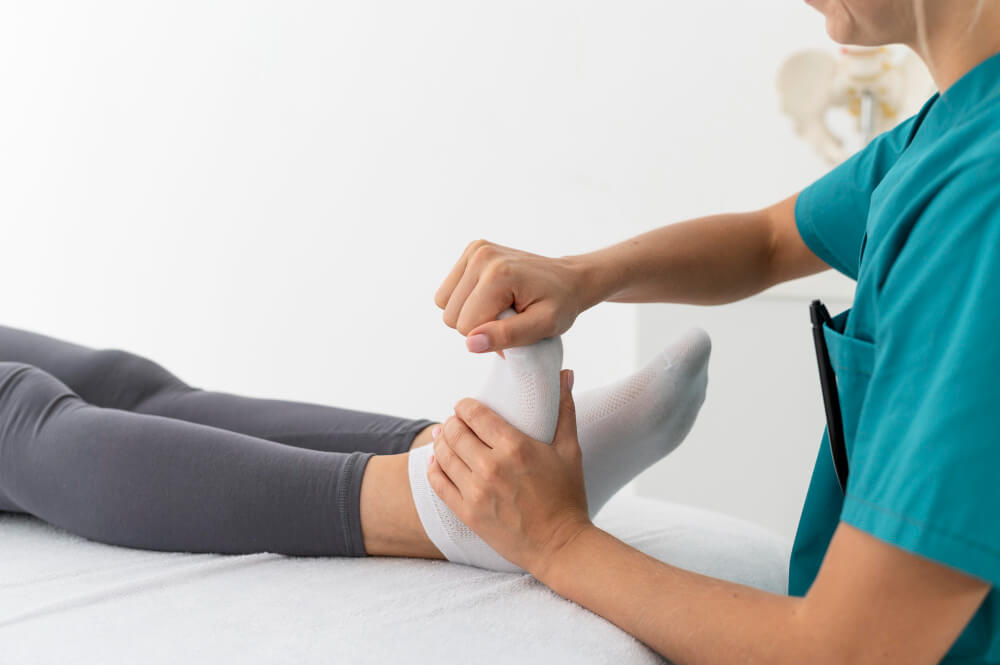Sports Medicine For Ankle Injury Recovery
Ankle injuries are a common occurrence among athletes and can significantly impact athletic performance. The ankle joint is a complex structure that is prone to sprains, strains, and fractures. Sports medicine clinics offer specialized care for ankle injuries, providing diagnosis, treatment, and rehabilitation to help athletes recover and return to their sport.
Common Ankle Injuries
Ankle injuries can range from mild sprains to severe fractures. Some of the most common ankle injuries include:
- Ankle Sprains A sprain occurs when the ligaments in the ankle are stretched or torn. Ankle sprains are classified into three grades, depending on the severity of the injury:
- Grade 1 sprain: Mild sprain with minimal ligament damage.
- Grade 2 sprain: Moderate sprain with partial tearing of the ligament.
- Grade 3 sprain: Severe sprain with complete tearing of the ligament.
- Symptoms of Ankle Sprains Pain, swelling, bruising, and difficulty walking.
- Treatment of Ankle Sprains Rest, ice, compression, and elevation (RICE), pain medication, and physical therapy.
- Achilles Tendonitis Inflammation of the Achilles tendon, which connects the calf muscle to the heel bone.
- Symptoms of Achilles Tendonitis Pain in the back of the heel, especially during activity.
- Treatment of Achilles Tendonitis Rest, ice, compression, elevation (RICE), pain medication, and physical therapy. In severe cases, corticosteroid injections or surgery may be required.
- Ankle Fractures A break in one or more of the bones in the ankle joint.
- Symptoms of Ankle Fractures Severe pain, swelling, bruising, and inability to bear weight on the affected foot.
- Treatment of Ankle Fractures Immobilization, pain medication, and in some cases, surgery.
The Role of Sports Medicine Clinics
Sports medicine clinics offer specialized care for athletes with ankle injuries. They provide a comprehensive approach to diagnosis, treatment, and rehabilitation, including:
- Physical Examination A thorough evaluation of the injured ankle, including assessment of range of motion, strength, and stability.
- Imaging Studies X-rays, MRI, or ultrasound to diagnose the extent of the injury.
- Treatment Plans Personalized treatment plans tailored to the specific needs of the athlete.
Treatment Options for Ankle Injuries
The treatment for Ankle injuries will depend on the severity of the injury. Common treatment options include:
Non-surgical treatments
Non-surgical treatments may include:
- Rest, Ice, Compression, and Elevation (RICE): Resting the injured ankle, applying ice to reduce swelling, using compression bandages, and elevating the foot to reduce swelling.
- Pain Medication: Over-the-counter pain relievers, such as acetaminophen or ibuprofen, can help manage pain and inflammation.
- Physical Therapy: Exercises and therapies to strengthen the ankle muscles, improve range of motion, and restore function.
Surgical Treatment
In some cases, surgery may be necessary to repair damaged ligaments or tendons. Common surgical procedures for ankle injuries include:
- Arthroscopic Surgery: Minimally invasive surgery to repair damaged tissues.
- Open Reduction and Internal Fixation (ORIF): A surgical procedure to repair broken bones using screws, plates, or other hardware.
Rehabilitation After Ankle Injury
Rehabilitation is an essential part of the recovery process after an ankle injury. Physical therapy can help you regain strength, flexibility, and range of motion in your ankle.
- Physical Therapy Exercises Your physical therapist will prescribe exercises to help you recover.
- Gradual Return to Activity You will gradually increase your activity level over time, starting with gentle exercises and progressing to more challenging activities.
- Follow-up Appointments Regular follow-up appointments with your sports medicine specialist are important to monitor your progress and address any concerns.
Preventing Ankle Injuries
While it is not always possible to prevent ankle injuries, there are steps you can take to reduce your risk:
- Proper Footwear Wear well-fitting shoes that provide adequate support.
- Strength Training Strengthening the muscles around the ankle can help protect it from injury.
- Stretching Stretching before and after activity can help improve flexibility and reduce the risk of injury.
- Proper Technique Use proper technique when participating in sports and other activities.
- Warm-up and Cool-down Warming up before activity and cooling down afterward can help prevent injuries.
Choosing a Sports Medicine Clinic
Selecting the right sports medicine clinic for your Ankle injury care is crucial. Consider the following factors:
- Experience and Expertise Look for a sports medicine clinic with experience in treating ankle injuries.
- Board Certification Ensure the physicians are board-certified in sports medicine.
- Patient Reviews Read reviews from other patients to get a sense of the clinic’s reputation and quality of care.
- Services Offered Choose a clinic that offers a comprehensive range of services, including physical therapy, rehabilitation, and sports performance enhancement.
- Consultation Schedule a consultation with a sports medicine specialist to discuss your needs and expectations.
Conclusion
Ankle injuries can significantly impact your athletic performance and daily activities. By seeking prompt medical attention and following your doctor’s recommendations, you can recover from your injury and return to your normal activities. Sports medicine clinics offer specialized care and support to help you achieve a full recovery.
Contact our clinic’s Sports medicine for Ankle injury care (214) 949-8918 Or Visit us https://specialtycareclinics.com/


